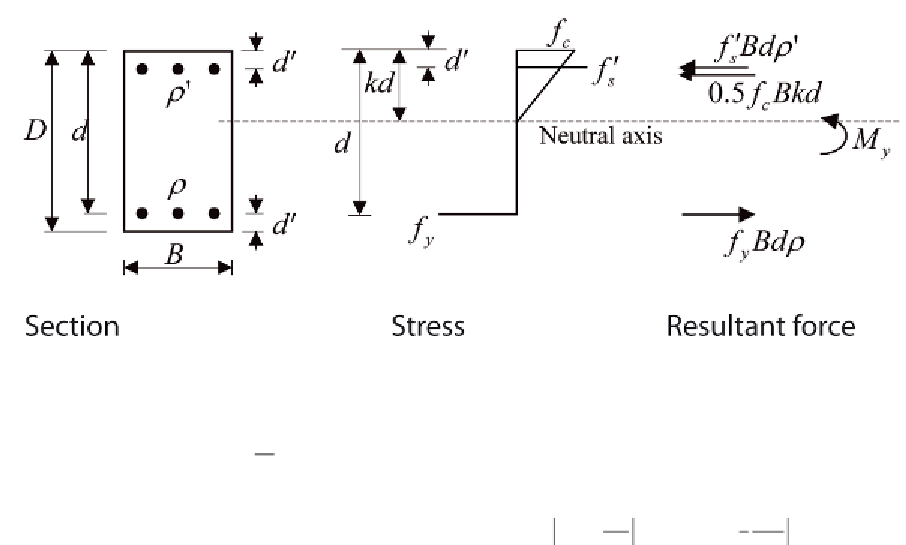Geology Reference
In-Depth Information
Figure 3. Double reinforced member section at first yield
lor series approximation for evaluating the value
of
θ
p
is given as
d
d
'
)
+
′
2
2
+
′
− +
′
k
=
(
ρ
ρ
)
n
+
2
(
ρ
ρ
n
(
ρ
ρ
)
n
sc
sc
sc
(18)
+
∂
∂
θ
ρ
∂
∂
2
θ
ρ
2
1
2
( )
p
(
0
)
p
(
0
)
θ ρ
=
θ
ρ
−
ρ
+
ρ
−
ρ
p
p
0
0
0
ρ ρ
=
ρ ρ
=
2
ρ ρ
=
sc s
=
where
E
c
and
E
s
are the
moduli of elasticity of the concrete and the steel,
respectively.
Similarly,
M
y
for an axial-moment hinge
(wherein there is co-existent axial force) can be
expressed in terms of design variables,
ρ
and
′
in which
n
E E
(21)
where the tension steel ratio,
ρ
, is considered as
the major design variable; for simplicity, the
compression steel ratio,
ρ
, is assumed to be
linearly related to
ρ
for beams and to be the same
as
ρ
for columns. Given the explicit expression
of
M
y
as a function of
ρ
from Eqs. (17) and (19),
the gradient,
∂
∂
ρ
as
2
f Bd
n
2
f Bd d
(
−
d
')
D k d
k
ρ
⋅
y
y
M
=
⋅
−
+
⋅
θ
ρ
y
2
2
3
1
−
k
2
d
1
−
k
p
, and the second-order term,
sc
(19)
∂
∂
2
θ
ρ
p
, can be analytically calculated from Eq.
where
k
is given as
2
(16).
By substituting the explicit plastic rotation,
θ ρ
2
F
f Bd
F
f Bd
D
d
F
f Bd
k
= −
2
ρ
+
X
n
+
2
ρ
+
X
n
2
+
2
n
ρ
+
X
sc
sc
sc
p
( )
, given in Eq. (21) into Eq. (15), the pushover
displacement,
u
j
, in Eq. (13) can also be explic-
itly expressed in terms of the design variable,
ρ
i
in Box 2.
y
y
y
(20)
To take into account the change in
θ
p
due to a
change in
ρ
and
ρ
while maintaining an instan-
taneously fixed value of M, a second-order Tay-






Search WWH ::

Custom Search